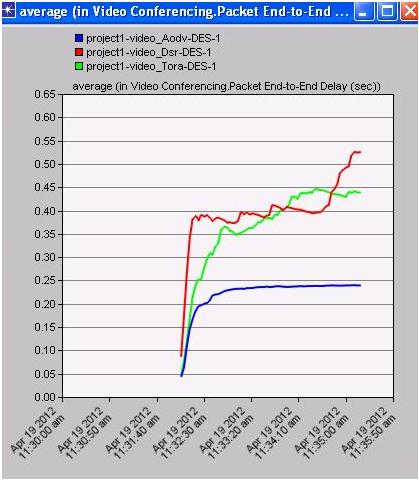Introduction to Packet End To End Delay In Video Conferencing Technical Seminar Topic:
Packet end to end delay indicates the overall delay at the end to end communication process. This delay should be less enough to improve the quality of the video application and the actual comparison graph is as shown below.
It can be observed from the above graph that the overall end to end packet delay is less with AODV routing protocol. When the case with DSR and TORA are considered the end to end packet delay is very high and this is due to the internal routing behavior of the protocols and thus the quality of the video applications is reduced. The end to end packet delay is very less with AODV routing protocol and thus the quality of the video application can be enhanced in this case.
From the overall analysis of the video results it is clear that, AODV routing protocol can be used across the MANETs to improve the quality of service across the video applications. When the case with DSR routing protocol is considered the overall packet delay variation and end to end packet delay is more and even it is same with the TORA. Thus AODV is always the best suited routing protocol for both the voice and video application quality of service for MANETS.

